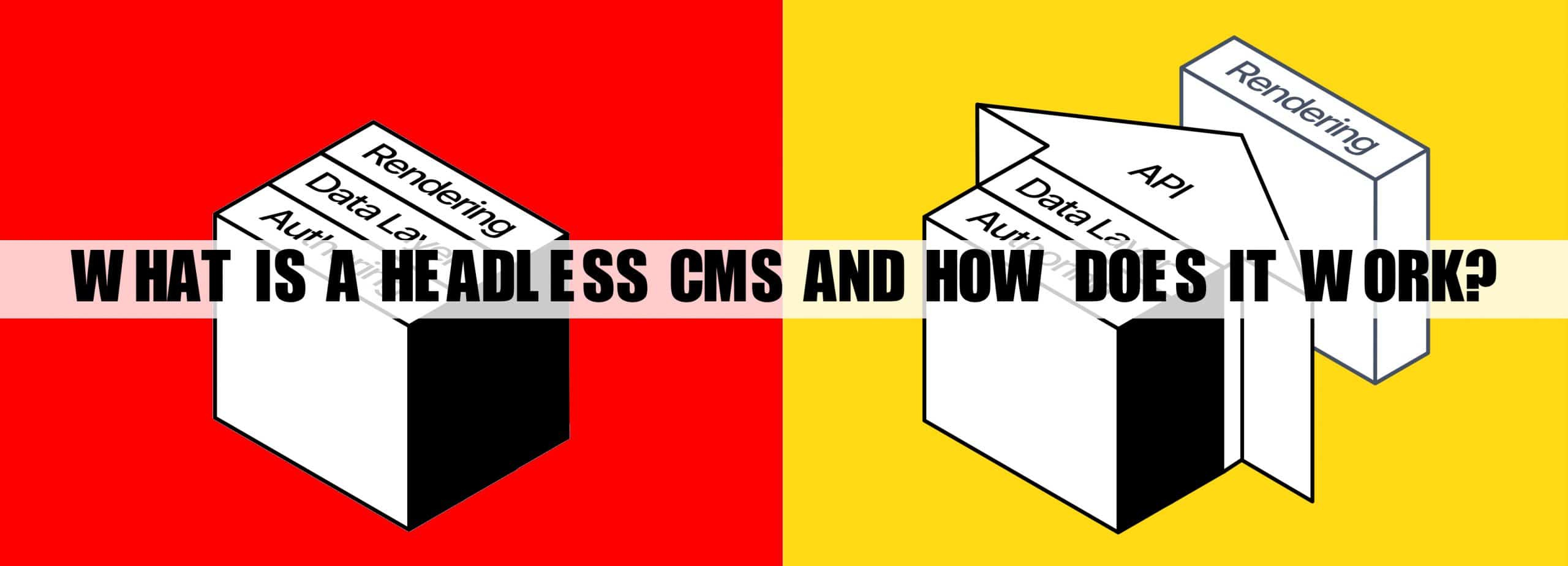- HOME
- CHECKOUT / CART
- LOGIN / REGISTER
- LINK BUILDING
- SEO
- OTHER SERVICES
- RESOURCES
- ABOUT
- About Us
- Why Us
- Testimonials
- INDUSTRIES
- Cannabis CBD Marketing and SEO
- Carpet Cleaning Marketing and SEO
- Cell Phone Repair Marketing and SEO
- Dental Marketing and SEO
- Drug Rehab Treatment Centers Marketing and SEO
- HVAC Marketing and SEO
- Junk Removal Marketing and SEO
- Law Firm Marketing and SEO
- Law Firm Website Design
- Medical and Healthcare Marketing
- Plastic Surgeons Marketing and SEO
- Plumbing Marketing and SEO
- Private Detectives / Investigators Marketing and SEO
- SaaS Marketing and SEO
- CONTACT
What Is a Headless CMS and How Does It Work? |

What Is a Headless CMS and How Does It Work?
The digital world is progressing rapidly, and it’s forcing companies to move some of their business transactions and marketing online.
This marketing can complicate the back-of-house workflow. Companies are struggling to implement many different systems to keep up with this new technological advance. That’s where headless CMS comes in.
A headless CMS is a single centralized system created with the purpose of simplifying the management of all channels from one place by creating a separated front end and back end. It’s a data source that consists solely of the back end and relies on its API (application programming interface) to facilitate the front ends.
What is a CMS?
A CMS is an abbreviation and acronym for “Content Management System”. A CMS can create and customize content and functionality using plugins and templates. It’s a multi-use tool that can be used for many purposes, resulting in more than half of websites built using a CMS.
What are some examples of CMS?
There are many content management systems (CMS) out there. The list is extensive, but a few examples would include Box, Ghost, Bynder, and Squarespace.
Content management systems may also be broken down further into subgroups including (but not limited to):
- Enterprise Content Management (ECM)
- Web Content Management System (WCMS)
- Digital Asset Management System (DAM)
- Document Management System (DMS)
- Component Content Management System (CCMS)
What is a headless CMS?
A headless CMS is a Content Management System that is broken down into three integrated interfaces: the back end, the API (the middleman), and the client-facing side (the front end). It communicates through the API to template content in the proper format for each digital need (channel, browser, or other media types).
A headless CMS is high performing, flexible, and scalable system. It features enhanced security and optimizes performance to create a secure and fast website.
What is the difference between traditional and headless CMS?
A traditional CMS is used to manage the front and back ends of a website. This is supposed to be a single solution management system. The back end would be used for storage and content management. The front end would be used to deliver the content.
Some examples of the traditional CMS include WordPress, Wix, and Squarespace.
A headless CMS is separated into parts so that the front end can be developed or edited apart from the back end. This allows developers to build as many channels as necessary while allowing content creators and editors to continue doing their job the same way.
Some examples of headless CMS include Contentful, Sanity, and Strapi.
What is the difference between a decoupled CMS and a headless CMS?
A decoupled CMS uses the same templates across all media or browser types. A headless CMS has unique codes specifically for each browser, channel, or media type.
How does a headless CMS work?
The headless CMS’s front and back ends are separated. This means the server and the client-side require a form of connection to communicate (where API comes in).
What is API?
API is an acronym for an application programming interface. This interface is the communicator between the back of the house and the front.
What are the benefits of a headless CMS?
It can simplify omnichannel content publishing. This means that content published can be pushed to different platforms through an API, and each one will be optimized for that media or channel. This means that more media outlets can be used, but all of the content can be used for each of them.
Content could be published in a blog, an app, and VR all at the same time while keeping the templates and structure the same across all media platforms. The API is almost like the mold for the content. The content is pushed through and given a template to follow for each media channel.
Why should I use a headless CMS?
A headless CMS will ensure that your content is published across all channels equally and efficiently. A headless CMS could be expanded later, without affecting the production of the back-of-house workers (like writers and editors).
A headless CMS also empowers a director to manage the content from a single source and deliver it to many channels. Your needs and resources may change over time: having a separate back end means you can change tools or development at any time.
Headless CMS generally has quicker load times for websites, which can help with SEO rankings. Headless CMS is flexible and functional. They are connected with the API, but both the front and back ends are editable. While it may take a bigger upfront time investment, headless CMSs are going to be a game-changer in the world of business, bringing faster, lighter, better-integrated websites to the world wide web.
Our locations and Services:
Find us on Google maps for directions: Digital Marketing | SEO Las Vegas, Digital Marketing | SEO New York, Digital Marketing | SEO Phoenix, Digital Marketing | SEO Houston, Digital Marketing | SEO Atlanta, Digital Marketing | SEO Anaheim, Digital Marketing | SEO Alexandria, Digital Marketing | SEO Austin, Digital Marketing | SEO Calabasas, Digital Marketing | SEO Cleveland, Digital Marketing | SEO Corpus Christi, Digital Marketing | SEO Dayton, Digital Marketing | SEO Detroit,Digital Marketing | SEO Fort Worth, Digital Marketing | SEO Henderson, Digital Marketing | SEO Indianapolis, Digital Marketing | SEO Irvine, Digital Marketing | SEO Jersey City, Digital Marketing | SEO Knoxville, Digital Marketing | SEO Long Beach, Digital Marketing | SEO Los Angeles, Digital Marketing | SEO Medford, Digital Marketing | SEO Mesa, Digital Marketing | SEO New Orleans, Digital Marketing | SEO Palmdale, Digital Marketing | SEO San Jose, Digital Marketing | SEO Santa Clarita, Digital Marketing | SEO Santa Monica, Digital Marketing | SEO Scottsdale, Digital Marketing | SEO Sherman Oaks, Digital Marketing | SEO Seattle, Digital Marketing | SEO Tacoma, Digital Marketing | SEO Torrance

By placing an order, signing up for services from Marketing1on1 LLC or using this website you agree to Terms and Conditions and Privacy Policy
Copyright © Marketing1on1 LLC All rights reserved.
The content of this web site may not be copied, replaced, distributed, published, displayed, modified, or transferred in any form or by any means except with the prior permission of Marketing1on1 LLC.
Copyright infringement is a violation of federal law subject to criminal and civil penalties.
Blog | Accessibility Statement




